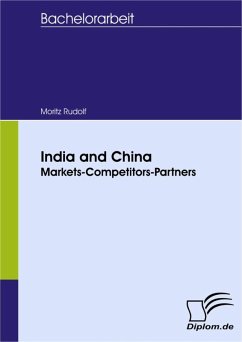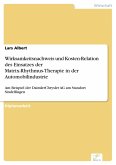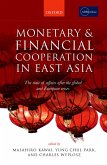Inhaltsangabe:Introduction: Academics, students, the media and the public have been increasingly drawn to China and India in recent years. Both countries were considered sleeping giants and are now turning into the motors of global economic growth. China and India are both ancient civilizations with a rich history and were among the largest economic powers until European colonization in the 19th century. After Indian independence in 1947 and the establishment of the Peoples Republic of China in 1949 both countries shared the view that economic development should be achieved through a self-sustaining economy led and controlled by the government. In the following decades the share of Chinese and Indian global trade decreased significantly. Economic reform in China and India in 1978 and 1991 respectively resulted in an increasing integration into global markets and triggered large economic growth. However China and India differ in many ways. On the one hand China started its reforms 13 years earlier than India. Due to early establishment of Special Economic Zones (SEZ), strong connections with oversea Chinese in Taiwan and the abundance of cheap labor China was able to position itself as the manufacturing center of the world. India on the other side still lacks the degree of integration in global markets, and the structure of labor and bankruptcy laws, red-tape and poor infrastructure are just some obstacles for further Indian development. In addition, India and China are built on different approaches of governance. India is a democracy which makes it more difficult to introduce pragmatic laws, yet easier to absorb exogenous shocks. China on the other side is solely ruled by the Communist Party of China. As a result it is easier to adopt new policies, but on the other side legitimization to govern is limited and connected to economic growth. A closer analysis of China reveals the existence of several influential interest groups and lobbyists which makes governing China a balancing act in itself yet this will not be subject of this study. China and India both face serious principal-agent problems when it comes to enforcing laws and due to large heterogeneous populations, governing each country is a complex challenge. Today, according to GDP in PPP data China and India rank 2nd and 4th respectively globally. Their share is likely to improve and they are expected to become the world¿s biggest energy importers and CO2 emitters. The rise of the two [...]
Dieser Download kann aus rechtlichen Gründen nur mit Rechnungsadresse in A, B, BG, CY, CZ, D, DK, EW, E, FIN, F, GR, HR, H, IRL, I, LT, L, LR, M, NL, PL, P, R, S, SLO, SK ausgeliefert werden.









